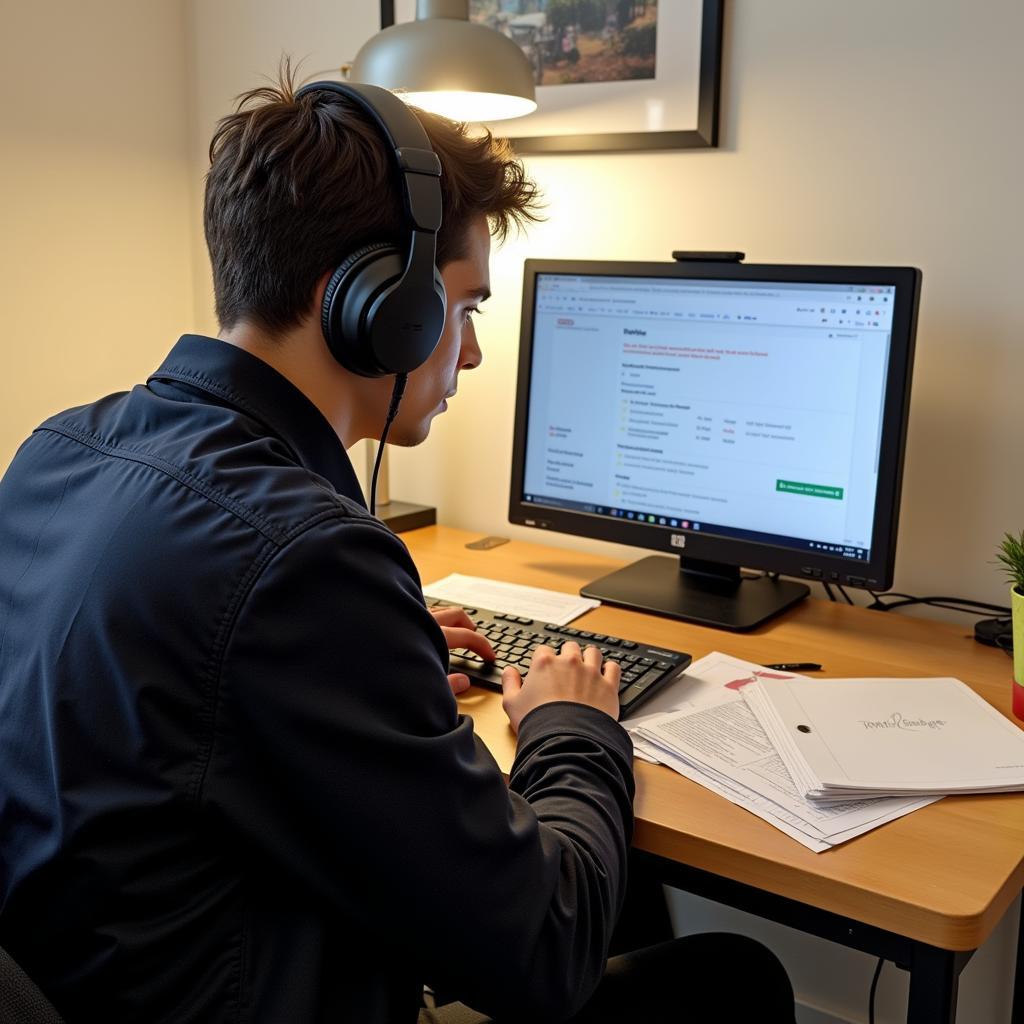Mastering IELTS listening requires adapting to various speech speeds, accents, and delivery styles. This comprehensive guide will help you develop effective strategies for practicing IELTS listening at different speeds, ensuring you’re well-prepared for any listening scenario in the test.
Understanding the Importance of Speed Variation
Different sections of the IELTS listening test feature speakers talking at varying speeds. While some conversations may be relatively slow and clear, others might be faster and more challenging. How to get band 7 in IELTS listening requires mastering these speed variations.

Common Speed Patterns in IELTS Listening
- Slow to moderate speed (Sections 1 and 2)
- Moderate to fast speed (Sections 3 and 4)
- Natural speech variations
- Emphasis and stress patterns
Progressive Speed Training Techniques
Starting with Slow Speed Practice
- Begin with 0.75x speed recordings
- Focus on detailed comprehension
- Practice note-taking thoroughly
- Review and analyze missed information
How to improve understanding of IELTS listening accents can complement your speed practice effectively.
Advancing to Normal Speed
- Move to 1.0x speed once comfortable
- Practice with various accent types
- Focus on maintaining accuracy
- Develop prediction skills
Mastering Fast Speed Listening
Rapid Speech Adaptation Strategies
- Practice with 1.25x speed recordings
- Focus on key information extraction
- Develop quick note-taking techniques
- Train your ear for connected speech
How to deal with long IELTS listening passages provides additional insights for managing complex listening tasks.
Advanced Practice Methods
Mixed Speed Training
- Alternate between different speeds
- Practice with authentic materials
- Use speed variation exercises
- Create personalized practice sessions
How to improve listening for IELTS academic test offers valuable techniques for academic contexts.
Technology-Enhanced Practice
- Use audio editing software
- Apply speed controls in media players
- Utilize online IELTS platforms
- Record and analyze your responses
Developing Speed Resilience
Mental Preparation Techniques
- Practice focused listening
- Build concentration stamina
- Manage listening anxiety
- Develop quick thinking skills
Physical Practice Environment
- Create a distraction-free space
- Use quality headphones
- Maintain proper posture
- Take regular breaks
Progress Tracking and Assessment
Regular Evaluation Methods
- Keep a practice log
- Monitor improvement patterns
- Identify speed-related weaknesses
- Adjust practice strategies accordingly
Strategies for increasing reading comprehension speed can help develop complementary skills.
Common Questions About IELTS Listening Speed Practice
Q: How often should I practice with increased speeds?
A: Start with 20-30 minutes daily, gradually increasing to 1-hour sessions as your comfort level improves.
Q: When should I move to faster speeds?
A: Progress to faster speeds when you consistently achieve 80% accuracy at your current speed level.
Q: How can I maintain accuracy at higher speeds?
A: Focus on keywords, develop prediction skills, and practice active listening techniques.
Q: What’s the best way to practice with varying speeds?
A: Use a combination of authentic materials and specialized IELTS practice resources with adjustable speed controls.
Q: How do I know if I’m ready for test-speed listening?
A: You should be comfortable with 1.25x speed and maintain good comprehension at normal speed.
Remember, consistent practice with different speeds is key to IELTS listening success. Focus on gradual progression and maintain regular practice sessions to build your listening skills effectively.